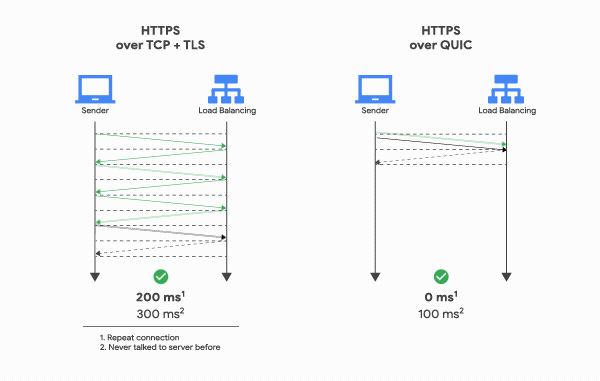Whether you’re really passionate about RPC, MQTT, Matrix or Nostr, tell us more about the protocols or open standards you have strong opinions on!
- IPv6, needed for modern Internet not to collapse, would make many other important things easier. Easier to become an ISP, to selfhost, to build P2P networks, etc.
- GNU Taler, a payment protocol just look at it go: https://101010.pl/@didek/111934952208145427, or just imagine building a payment terminal of a Raspberry Pi
- Matrix, to unify chat, conference and calling apps
- some self-arranging darknet protocol becoming a norm like I2P, GNUNet or Yggdrasil, so we could have a backup when mass Internet blockage happen
I’m stupid, can you elaborate a little further about how ipv6 would make becoming an ISP easier?
There are no IPv4 addresses left. So you eather go IPv6-only, which would make many services not work. Or wait in a long queue to repurpose address spaces marked as depracated which would soon run out too. And then you put clients behind double or triple NAT doing having shitty service.
Matrix I have doubts about. The idea of Tox was nicer, but the implementation quality and the scandal at some point didn’t help.
Tox felt more playable, like piping files over it or a remote shell over it (I know, bad associations, but still), or even using it for VPN. I think there were clients allowing to do such stuff, and the protocol allows it.
EDIT: I mean, it’s still alive, just don’t see it claiming the place of FOSS old Skype replacement as it did.
GNUNet - all you people mentioning it have peers? I tried to set it up a few weeks ago, couldn’t get peers.
Yggdrasil - feels cool.
I2P - not intended for that, I think.
I2P - not intended for that, I think.
to be clear, I2P is not really intended for anything, it’s used for everything. It supports all kinds of things, and there are people doing all kinds of things on it. Though i could see potential technological limitations being a problem.
About Tox, I am not a fan of mixing up universal delivering of packets and applications. Piping files or using as VPS feels like something that would be better done with proper full network and not be mixed with chat.
I, on the contrary, think it’s cool for things to be universal, layered and reusable for different tasks.
What scandal did Matrix have? I only just tried out Matrix like a month ago and am unaware of anything like that.
Tox, not Matrix.
I really hope matrix gets native VoIP. I saw like 2 years ago it was in beta, haven’t kept up with it though. I’d also really like voice channels like discord so my friends and I can replace discord but it seems like matrix isn’t interested in being a discord replacement
Matrix can be configured to have VoIP. I have it set up on my server. Haven’t tried it in group voice chat setting yet though. Only 1 on 1
Markdown. Its only in tech-spaces that its preferred, but it should be used everywhere. You can even write full books and academic papers in markdown (maybe with only a few extensions like latex / mathjax).
Instead, in a lot of fields, people are passing around variants of microsoft word documents with weird formatting and no standardization around headings, quotes, and comments.
Markdown is awesome, I agree! I did not realize you could extend markdown with anything other than html. The html extension is quite nice to do anything that markdown doesn’t support natively, but I wish there was an easier way to extend markdown. Maybe the ones you listed are what I need.
It is too basic. I guess something more full-fledged like… typst?
ReST (restructured text) is a good middle ground. I just wish it had more support outside of the python community. It could use some new/better tooling than Sphinx
Typst is a typesetting format - an alternative to LaTeX. Asciidoc is more of a competitor to markdown.
Markdown is terrible as a standard because every parser works differently and when you try to standardize it (CommonMark, etc.), you find out that there are a bajillion edge cases, leading to an extremely bloated specification.
Agreed in principle, but in practice, I find it’s rarely a problem.
While editing, we pick an export tool for all editors and stick to it.
Once the document is stable, we export it to HTML or PDF and it’ll be stable forever.
Most ppl have settled on Commonmark luckily, including us.
Have you read the CommonMark specification? It’s very complex for a language tha’t supposed to be lightweight.
What’s the alternative? We either have everything specified well, or we’ll have a million slightly incompatible implementations. I’ll take the big specification. At least it’s not HTML5.
An alternative would be a language with a simpler syntax. Something like XML, but less verbose.
And then we’ll be back to a hundred slightly incompatible versions. You need detailed specifications to avoid that. Why not stick to markdown?
Not if the language is standardized from the start.
Commonmark leaves some stuff like tables unspecified. That creates the need for another layer like GFM or mistletoe. Standardization is not a strong point for markdown.
I believe commonmark tries to specify a minimum baseline spec, and doesn’t try to to expand beyond that. It can be frustrating bc we’d like to see tables, superscripts, spoilers, and other things standardized, but I can see why they’d want to keep things minimal.
Asciidoc is a good example of why everything should be standardized. While markdown has multiple implementations, any document is tied to just one implementation. Asciidoc has just one implementation. But when the standard is ready, you should be able to switch implementations seamlessly.
I agree 💯
Man, I’ve written three novels plus assorted shorter form stories in markdown.
There’s a learning curve, but once you get going, it’s so fluid. The problem is that when it comes time to format for release, you have to convert to something else, and not every word processor can handle markdown. It’s extra work, but worth it, imo.
Silly question why can’t you convert markdown to PDF and pass that to publishers?
Because it isn’t doc is docx.
Publishers are pissy about such things. Even self publishing (which is what I do now), the various outlets still have limits to what they will use. Amazon accepts something like three file formats, including their own, and pdf isn’t on the list.
I could just do pdf for directly giving them away to people, but even then, epub is usually a better pick in terms of readability since that’s the standard for actual books since ereaders tend to display it better than pdfs. Most people reading books via files would be using something that can give a better experience with epub vs pdf.
Just set up pandoc and Bob’s your uncle. It’ll convert markdown to anything. You’ll never have to open another word processor.
Nice! Thanks for the tip!
Edit: holy shit, how have I never run across that before? That’s a brilliant program right there.
Pandoc + [your markdown editor of choice] is magic. Some editors even come with Pandoc as a dependency so you can export to more or less anything from the GUI. I think GhostWriter and Zettlr at least (I honestly can’t be sure, I’ve changed editors so often and now I just have some Pandoc conversion scripts in my file manager menu).
For sure, I bet full fledged editors like word don’t even let you import it.
Not correctly, no. Librewriter does a bit better, but still misses some bits
I think Obsidian and Logseq are helping to change this.
Depends on the type of book. Since you need HTML for all non default styles. Therefore, it raises the bar… you need a bit of web dev knowledge which removes the biggest benefit of markdown: simplicity / ease of use.
I frigging love markdown for everything!
My main wishlist for markdown, is a better live collaborative markdown editor. Hedgedoc works, but it’s showing it’s age, and they don’t seem to be getting close to releasing v2.
Etherpad also has a markdown extension, but it doesn’t import / export that well.
Unified Push.
Unbelievable that we have to rely on Google and co for sth as essential as push messages! Even among the open source community, the adoption is surprisingly limited.
Fuck Unified Push. Just use the Web Push standard. https://www.rfc-editor.org/rfc/rfc8030
It is what is used for browser push messages, is already widely supported. Is compatible with existing push infrastructure and users and is end-to-end encrypted. IDK why Unified Push felt the need to create a new protocol when a perfectly good one already existed.
Although there is no “client side” spec. The Unified Push client side could be useful. But they should throw away their custom backend protocol and just use Web Push.
Nobody knows about unifiedpush. Last time I checked, their Linux dbus distributor also wasn’t ready. There has to be a unified push to get it adopted.
Removed by mod
definitely some alternative internet mesh routing standart, just imagine if every device with wifi or ethernet could just extend the network without relying on an isp, yeah they could still serve as a fast backbone, but they just wouldn’t be needed and no disaster could really ever disrupt the whole internet again
RSS. It’s still around but slowly dying out. I feel like it only gets added to new websites because the programmers like it.
Theres quite a few sites that still use it and existing ones in the Fediverse have it built in (which is really cool). But your right, the general public have no concept of having something download and queue up on a service rather than just going to the site. And the RSS clients are all over the place with quality…
It’s seen it’s renneisance recently
Sadly so many rss feeds are just the first paragraph and not the whole article
How so? Outside very niche stuff or podcasts I just don’t seem to it used that often.
Most websites still use standard back ends with RSS support. Even static site generators also do it. The only difficulty is user discovery.
Yeah… It always being there hardly makes it a “renaissance”, no?
WebSub (formerly PubSubHubbub). Should have been a proper replacement for RSS with push support instead of polling. Too bad the docs were awful and adopting it as an end user was so difficult that it never caught on.
I still want something push based (without paying for those rss as a service)
deleted by creator
Oh neat! I didn’t know this existed. By any chance, do you know of any RSS readers that have implemented it?
deleted by creator
I wish more websites would use RSS Feeds. :-(
90% of the bullshit mass emails at my work could be an RSS feed.
“THIS WHOLE MEETING COULD HAVE BEEN AN RSS FEED!”
honestly: activity pub, matrix, xmpp, markdown and soo many more probably. All of these would be able to solve our walled gardens problem, but the apps with a basically monopoly don’t have much of an incentivw to implement them
IPv6
I mean, why the hell is IPv4 still a thing??
Because ipv6 is yucky
Yeah I’m anti IPv6 so I’m not going to ever use it personally. Ipv4 is enough for me
It may be enough for you, but not for everybody.
go ahead and use that on your home network, but if you work in IT and deploy it on public networks i’m going to kick you in the nuts
Because SecOps still thinks NAT is security, and NetOps is decidedly against carrying around that stupid tradition.
You can even Nat still if you want too lol
That said have you looked at securing ipv6 networks?It can be a lot of new paridgms that need to be secured.
Removed by mod
I hear you on this! Took me a whole day to get my router to delegate IPv6 properly. I’m sure that had it been better adopted, I wouldn’t be having such a hard time.
Try to remember a handful of them
Removed by mod
On the Internet, no. On my home LAN? Absolutely. I disabled all IPv6 at home.
For what?
In the world of computers, why would remembering numbers be the stop for new technologies?
Do you remember anyone’s public key? Certificate?
I don’t even remember domain (most) names, just Google them or save them as bookmarks or something.
The reason IPv4 still exists is because ISPs benefit from its scarcity. Big ISPs already paid a lot of money to own IPv4 addresses, if they switched to IPv6 that investnywould be worthless.
Try selling static IPv6 addresses as they do now with IPv4. People would laugh at them and just get a free IPv6 address from an ISP that wants to get new users and doesn’t charge for it.
The longer ISPs delay the adoption of IPv6, the longer they can milk IPv4 scarcity.
I don’t even remember my old ICQ UIN. People usually do that.
So yes, bring in IPv6.
Which ISPs offer IPv6 for free?
Asking for a friend.IPv6 addresses are practically endless, therefore their value is practically 0. ISPs justify charging extra for static IPv4 because IPv4 addresses do have a value.
If ISPs charge for static IPv6, then one of them could just give that service for free (while keeping the rest of the prices the same as their competitors). That would get them more customers while costing them nothing.
EDIT: I can’t give you an example of an ISP that offers free static IPv6 because there are no ISPs in my country that offer IPv6.
Should be every single one that supports IPv6.
For that matter, you should be getting an entire /60 at a minimum. Probably more like /56.
::1
Shortening rules actually make IPv6 addresses easier to remember than IPv4. Just don’t use auto configuration.
damn if only we had a service that like, obfuscated and abstracted these hard to remember IPs that aren’t very user friendly, and turned them into something more usable. That would be cool i think. Someone should make that.
Some kind of name system surely.
perhaps one that were to operate on like, a domain level, maybe.
gah, i’m just not too sure there’s a good term for this though.
FTP
Seriously guys, let’s share files the old fashioned way. Without bullshit.
I’d like to interject for a moment. What you’re referring to as FTP is, in fact, smelly hot garbage.
For context, I wrote this while waiting for a migraine to pass. I was angry at my brain for ruining my morning, and I like to shit on FTP. It’s fun to be hyperbolic. I don’t intend for this to be an attack on you, I was just bored and decided to write this ridiculous rant to pass the time.
I must once again rant about FTP. I’ve no idea if you’re serious about liking it or you’re just taking the piss, but seeing those three letters surrounded by whitespace reminds me of all the bad things in the world.
FTP is, as I’ve said, smelly hot garbage, and the infrastructure built to support FTP is even worse. Why? Well, one reason is that FTP has the most idiotic networking model conceivable. To see how crazy it is, let’s compare to a more sane protocol, like HTTP (for simplicity’s sake, I’ll do HTTP/1.1. First, you get the underlying transport protocol stuff and probably SSL. The HTTP client opens a connection from some local ephemeral port to the destination server on port 80/443/whatever and does all the normal protocol things (so syn->synack->ack and Client Hello -> Server Hello+server cert -> client kex+change cipher -> change cipher -> encrypted data). FTP does TCP too! Same same so far (minus SSL, unless you’re using FTPS). Next, the HTTP client goes like this:
GET /index.html HTTP/1.1 Host: www.whatever.the.fuck # a bunch of other headersand you know what fucking happens here? The fucking server responds with the data and a response code on the same goddamn TCP connection. You get a big, glorious response over the nice connection you established:
200 OK # a bunch of headers and shit HERE'S YOUR DAMN DATA NERDSo that’s nice, and the client you’re using to read this used that flow (or an evolution of that flow if you’re using HTTP/2 or HTTP/3). So what does FTP do? It does one of two really stupid things depending on whether you’re using active or passive mode. Active mode is the default for the protocol (although not the default for most clients), so let’s analyze that! First, your FTP client initiates a TCP connection to your server on port 21 (by default), and then the server just sends this:
<--- 220 Rebex FTP Server ready.ok, that kinda came out of nowhere. You’re probably using a modern client that saves you from all of the godawful footguns, so it then asks the server what it supports:
---> FEAT <--- 211-Supported extensions: <--- AUTH TLS;SSL; <--- CDUP <--- CLNT # A whole bunch of other 4 letter acronyms. If I was writing an FTP server, I'd make it swear at the user since there are a lot of fun 4 letter wordsThere’s some other bullshit we don’t care about right now, although highlights include sending the username and password in plain text. There’s also ASCII vs binary mode. WE’LL GET BACK TO THAT. :|
So then we want to do a LIST. You know what happens in active mode? Your computer opens up some random fucking TCP port. It then instructs the FTP server to CONNECT TO YOUR GODDAMN COMPUTER. Your computer is the server, and the other side is now the client. I would post a more detailed overview of the FTP commands, but most servers on the internet disable active mode because it’s a goddamn liability.
I’m probably not blowing many minds right now because people know about this shit. I just want to mention that this is how FTP was built. The data plane and control plane are separate, and back in 19XX when this shit was invented, you could trust your fellows on ARPANET and NAT didn’t exist and sure HAM radio operators here’s the entire goddamn
44.0.0.0/8block for you to do packet switched radio. A simple protocol for simple times, back before we knew what was good and what was bad.So, active mode sucks! PASV is the future, and is the default on basically all modern clients and servers! Passive mode works exactly the same as the above, except when the client goes to
LIST, the server opens some random TCP port (I’ve often seen something like 44000-44010) and tells the client, “hey you, connect to 1.2.3.4:44000 to get you your tasty data.” Sounds great, right? Well, there’s a problem that I actually touched on in my last paragraph. Back when this dogshit was first squeezed out back in the 70s, everyone had a public address. There were SO MANY addresses! 4 billion addresses? We’ll never use all of those! That is clearly not the case anymore. We don’t have enough addresses, and now we have this wonderful thing called NAT.Continued in part 2.
PART 2.
NAT, much like the city of Phoenix, is a monument to man’s arrogance. Fuck NAT, and fuck FTP. If your FTP server is listening directly on a public IP address, then none of this applies. If you’re anything like me, the last company I worked for (a small startup), or my current company (many many thousands of employees making software you know and may or may not hate, making many billions of dollars a year), then the majority of your servers are living in RFC1918 space. Traffic from the internet is making it to them via NAT (or NAT with extra steps, e.g. L4 load balancers). A request comes in for $PUBLIC_IP TCP port 21 or TCP port 44000-44010 and is forwarded to your failure of a boxen. Your FTP server is a big stupid idiot and doesn’t know this. It thinks that it’s king shit and has its own public IP address. Therefore, when it’s deciding what ADDR:PORT it’s going to tell your stupid FTP client to connect to, it just looks at one of the adapters on the box and says “oh, I’ll tell this client on the internet to connect to 10.0.54.187:44007” and then I fucking cry. Your FTP client is an idiot, but IP stack on your router is not and says “oh, that’s an address living in RFC1918 space, I shouldn’t send that out over the internet” and you don’t get the results of your LIST.
So, how do you fix this? Well, you fix it by not using FTP. Use SFTP USE SFTP USE SFTP FOR GOD’S SAKE. But since this world is a shit fucking place, you have two options. The best option is to configure your FTP server to lie about its IP address. Rather than being honest about what a fool it is, you can tell it to connect to your public IP address. Does your public IP address change? Fuck you, you get to write a daemon that checks for that shit, rewrites your FTP server config, and HUPs the bastard (or SIGTERMs it if your server sucks and can’t do a live config reload).
Let’s say that you don’t want to do that. Let’s say you work at a small company with a small business internet plan that gives you static IPs but a shitty modem. Let’s say that you don’t know what FTP is or how it works and your boss told you to get it set up ASAP and it’s not working and it surely must be your ISP’s fault. So you call up Comcast Business/AT&T/Verizon/Whoeverthefuck and you complain at their technicians for hours and hours, and eventually you get connected to a human that knows what the problem is and tells you how to configure your stupid FTP server to lie like a little sinner. The big telco megacorps don’t like that. They don’t want to waste all those hours, and they don’t want to hire too many people who can figure that shit out because it’s expensive. You wanna know what those fucking asshole companies did?
Continued in part 3.
Wait, encryption counts as bullshit now? ;)
FTP can be encrypted yo.
In that case, I’d like to chime in and add NFS to this list. The often overlooked jewel of the glorious past days. /j
So like… If I had a game installed on your computer, my computer could treat that game as if it’s local and load files over the Internet like it’s just reading my disk?
That is cool as fuck.
I was actually surprised to find out QUIC is fairly close to being default.
Wikipedia
HTTP/3 uses QUIC, a multiplexed transport protocol built on UDP.HTTP/3 uses QUIC, a multiplexed transport protocol built on UDP.
HTTP/3 is (at least partially) supported by 97% of tracked web browser installations (thereof of 98% of “tracked mobile” web browsers), and 29% of the top 10 million websites.
Which Wikipedia page?
odf/odt/ods
.md
SimpleX
Matrix
OpenPGP
Last, certainly not least… ActivityPub
Heads up for anyone (like me) who isn’t already familiar with SimpleX, unfortunately its name makes it impossible to search for unless you already know what it is. I was only able to track it down after a couple frustrating minutes after I added “linux” into the search on a lark.
I am so confused on how simpleX works
going based on preliminary understanding of this shit, it looks like it does all of the user handling on the client side explicitly, server side probably doesn’t do anything of the significant sort.
Or at least to a degree that provides reasonable assurance that X person is different from Y person based on the messaging alone. Though your typing style is going to significantly influence it regardless of that.
probably not accurate, just what i gleaned in about 3 minutes.
Markdown really should have more widespread support than it does. It’s just the right mix between plain text and an office document, I took my college notes with it in fact cause of how fast it was to format stuff. But as far as I know, there’s no default program on any of the (major) OS’s or Distros for viewing it.
Maybe it’s just due to a lack of standards for formatting or something, but regardless I do wish it was used and supported more.
markdown is standardized? I haven’t found two parsers that parse the same file the same for any but the most trivial documents
That’s what I mean by a lack of a standard for markdown. There needs to be at least a core standards for stuff (like bolding and italics), that is universal across stuff. Then if a program wants to add onto it, that’s fine. But just the core parts being standardized would help a lot.
There are some pseudo-standards for it. Github-flavoured markdown is probably the biggest of them. Then you get things like Obsidian-flavoured markdown that is based off of Github’s.
Remember SOAP? Remember XML-RPC? Remember CORBA?
Those were not very good.
I had to do some soap integration last year and it feels like it only got worse with age.
I’ve worked with all of them and hate all with a passion. SOAP wasn’t bad in theory but lots of APIs and clients didn’t implement it properly.
Why should this be at the editor level? There should be a linter that applies all these stylistic formatting changes to all files automatically. If the developer’s own editing tools or personal workflow have a chance to introduce non-standard styles to the codebase, you have a deeper problem.
Why should this be at the editor level?
Because for every programming language there’ll be people using text editors, but you’ll never succeed in even creating code formatters for them all.
The greatness in this project is in aiming low and making things better through simple achievable goals.
XMPP
Why not matrix?
You’re going off-topic from the OP question :-) But to answer your new question : I do not trust Matrix enough when it comes to privacy. I know that this link is old but still. https://disroot.org/en/blog/matrix-closure
Then again I do not trust Signal that much either but sometimes compromises need to be made to get things done. With XMPP the end user can host their own server if they wish to, without meta data going to a centralized point. And video calls via XMPP and Conversations were a pleasure to use when I used it during the Covid-19 pandemic.
Call me old fashioned, but I still call it Jabber.
🙂
I came here to say matrix but I’m not gonna lie. If XMPP had gotten the traction it deserved we wouldn’t need matrix.
I’m really into CloudEvents because I love event-driven systems, and since events can come from, or be consumed by, so many different services, having a robust spec is super duper useful.
So what problem is this solving? What are some event-driven systems that need to interoperate? Seems like even if you have a common encapsulation method, you still need code to understand and deal with the message body. Just seems like an extra layer around a JSON blob.
RSS (RDF Site Summary or Really Simple Syndication) It is in use a fair amount, but it is usually buried. Many people don’t know it exists and because of that I am afraid it will one day go away.
I find it a great simple way to stay up to date across multiple web sites the way I want to (on my terms, not theirs) By the way, it works on Lemmy to :)
Honestly there is rarely a blog I want to follow that doesn’t have it. I do think it would be great to have more readers using it so that it becomes more significant, but for my reading it is actually pretty great.




























